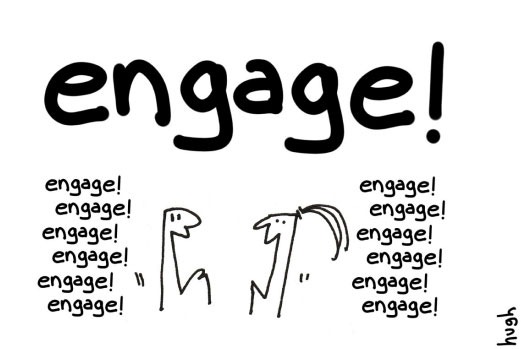
Now that it has become such a hot commodity in marketing, content generation may seem to be a new tactic, but it’s been around for decades. David Ogilvy, often referred to as the Father of Advertising, always believed that the steak is more important than the sizzle. He maintained that good copywriters must know their product extensively, present the facts honestly, and explain the products merits effectively.

Ogilvy favoured well-written copy as the most persuasive advertising tool. If you have a good product (and you truly understand your market), your primary task is to inform, educate and explain — thus helping your audience make the logical decision to buy. With all the noise created by marketing these days his message is rather refreshing.
Although content generation is not new, it is now seen as a key means of attracting and engaging with your audience. Which means there is a lot of content out there. Which means there is a lot of crap out there.
It’s not simply a matter of generating content; there are reams and reams (or rather, gigabytes and gigabytes) of content. If your information is going to be noticed and have any effect, it must be good. To help you with that ambition, consider thsi list to make your content more FRUITFUL:
Facts – Do your research and really understand what you are writing about. It’s pretty difficult to inform others from a position of ignorance.
Relevant – Understand who your target audience is. Knowing who you are writing for will inform what you write about as well as how you write it. It will also direct where you post/promote the content.
Useful – Beyond being relevant, is the information of use? Readers will have interest if it affects them: consider how does this information make their life better, simpler or more enjoyable.
Images – Many people are more visually oriented, others are simply too busy to thoroughly read your piece. So complement your words with appropriate photos, tables, charts, funny illustrations, etc. to help convey your message.
Trustworthy – Be honest, in reference to the information as well as how it is presented. We all want our product or service to stand out above the fray, but writing strategically and persuasively does not require falsehoods, or even hyperbole.
Flow – People respond well to stories partly because of their structure. A logical order of information and understandable chain of events makes it easy for readers to follow. The tone of “voice” of your writing and rhythm of the sentences can make your writing more approachable and engaging. (And this may change dramatically depending upon the content or audience.)
Unbiased – Ultimately you have an agenda. If you are communicating professionally, you are either trying to gain awareness for you or your organization, improve SEO, build brand, attract potential clients (or finally impress your mother). But, biased writing is typically discounted or disregarded by readers, so keep their needs in mind , not your own.
Learn – Humans have a thirst for knowledge, we all need to be continuously learning, so being a resource is an excellent way to earn readership. Incorporate tips and information that enable a “knowledge take-away” (like a check list!). Informing is good, but teaching is better (without being preachy or condescending).

There are many considerations when trying to write good content. What would you add to this list? (It doesn’t have to form a longer word… FRUITFULNESS?)








